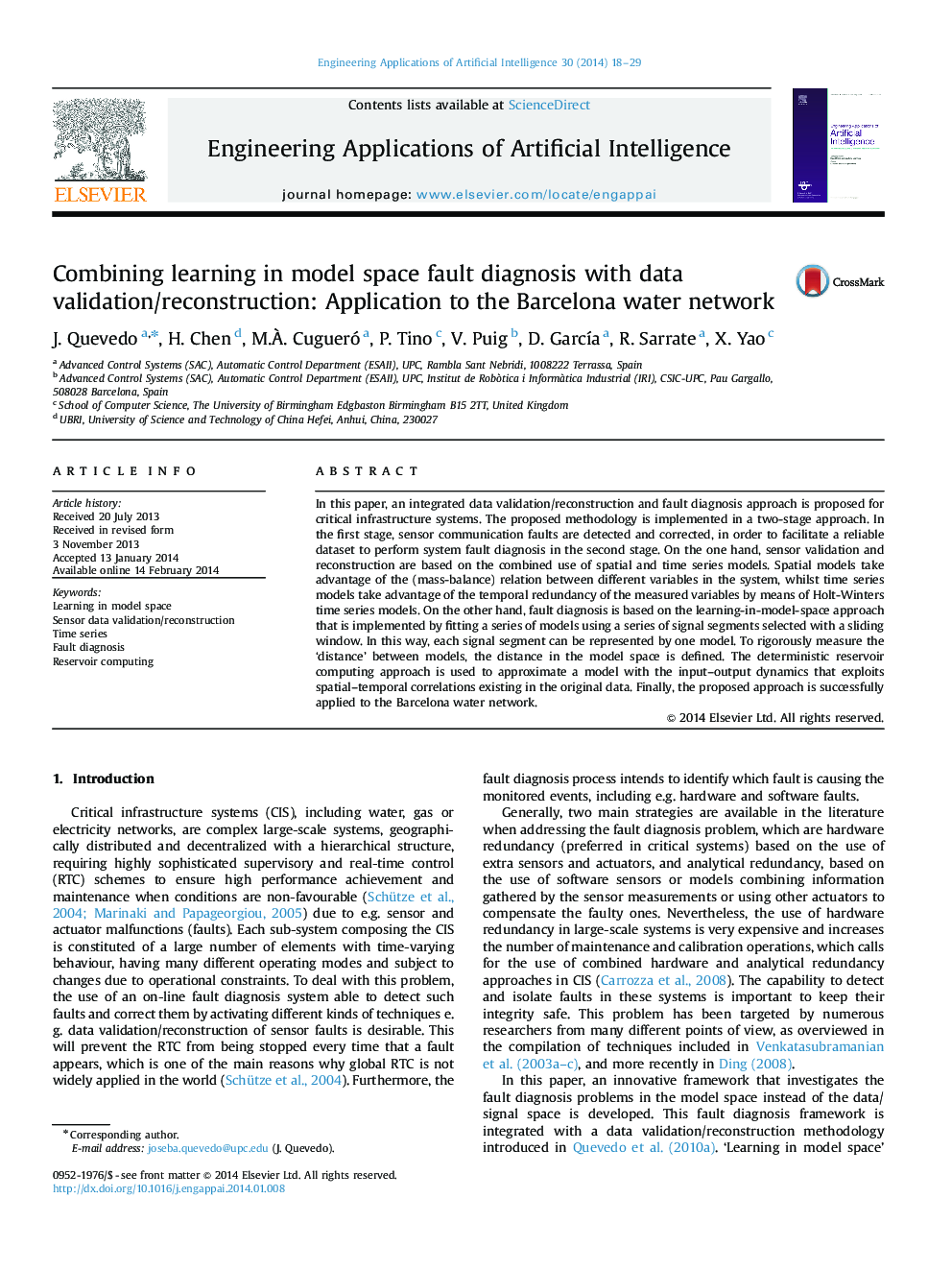| Article ID | Journal | Published Year | Pages | File Type |
|---|---|---|---|---|
| 380609 | Engineering Applications of Artificial Intelligence | 2014 | 12 Pages |
In this paper, an integrated data validation/reconstruction and fault diagnosis approach is proposed for critical infrastructure systems. The proposed methodology is implemented in a two-stage approach. In the first stage, sensor communication faults are detected and corrected, in order to facilitate a reliable dataset to perform system fault diagnosis in the second stage. On the one hand, sensor validation and reconstruction are based on the combined use of spatial and time series models. Spatial models take advantage of the (mass-balance) relation between different variables in the system, whilst time series models take advantage of the temporal redundancy of the measured variables by means of Holt-Winters time series models. On the other hand, fault diagnosis is based on the learning-in-model-space approach that is implemented by fitting a series of models using a series of signal segments selected with a sliding window. In this way, each signal segment can be represented by one model. To rigorously measure the ‘distance’ between models, the distance in the model space is defined. The deterministic reservoir computing approach is used to approximate a model with the input–output dynamics that exploits spatial–temporal correlations existing in the original data. Finally, the proposed approach is successfully applied to the Barcelona water network.
